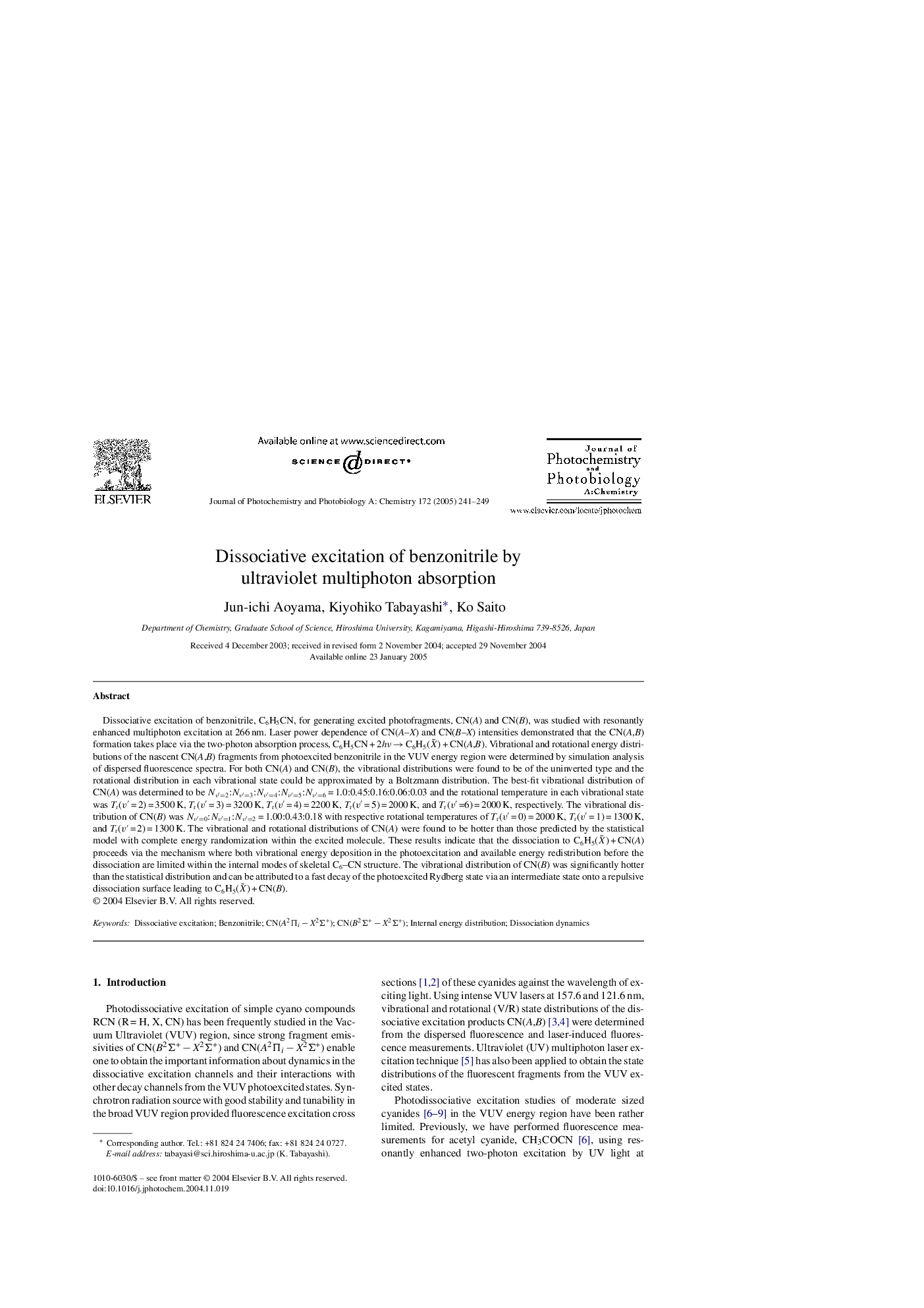| Article ID | Journal | Published Year | Pages | File Type |
|---|---|---|---|---|
| 9605604 | Journal of Photochemistry and Photobiology A: Chemistry | 2005 | 9 Pages |
Abstract
Dissociative excitation of benzonitrile, C6H5CN, for generating excited photofragments, CN(A) and CN(B), was studied with resonantly enhanced multiphoton excitation at 266 nm. Laser power dependence of CN(A-X) and CN(B-X) intensities demonstrated that the CN(A,B) formation takes place via the two-photon absorption process, C6H5CN + 2hν â C6H5(XË) + CN(A,B). Vibrational and rotational energy distributions of the nascent CN(A,B) fragments from photoexcited benzonitrile in the VUV energy region were determined by simulation analysis of dispersed fluorescence spectra. For both CN(A) and CN(B), the vibrational distributions were found to be of the uninverted type and the rotational distribution in each vibrational state could be approximated by a Boltzmann distribution. The best-fit vibrational distribution of CN(A) was determined to be Nvâ²=2:Nvâ²=3:Nvâ²=4:Nvâ²=5:Nvâ²=6 = 1.0:0.45:0.16:0.06:0.03 and the rotational temperature in each vibrational state was Tr(vâ²Â = 2) = 3500 K, Tr(vâ²Â = 3) = 3200 K, Tr(vâ²Â = 4) = 2200 K, Tr(vâ²Â = 5) = 2000 K, and Tr(vâ²Â =6) = 2000 K, respectively. The vibrational distribution of CN(B) was Nvâ²=0:Nvâ²=1:Nvâ²=2 = 1.00:0.43:0.18 with respective rotational temperatures of Tr(vâ²Â = 0) = 2000 K, Tr(vâ²Â = 1) = 1300 K, and Tr(vâ²Â = 2) = 1300 K. The vibrational and rotational distributions of CN(A) were found to be hotter than those predicted by the statistical model with complete energy randomization within the excited molecule. These results indicate that the dissociation to C6H5(XË) + CN(A) proceeds via the mechanism where both vibrational energy deposition in the photoexcitation and available energy redistribution before the dissociation are limited within the internal modes of skeletal C6-CN structure. The vibrational distribution of CN(B) was significantly hotter than the statistical distribution and can be attributed to a fast decay of the photoexcited Rydberg state via an intermediate state onto a repulsive dissociation surface leading to C6H5(XË) + CN(B).
Related Topics
Physical Sciences and Engineering
Chemical Engineering
Bioengineering
Authors
Jun-ichi Aoyama, Kiyohiko Tabayashi, Ko Saito,
